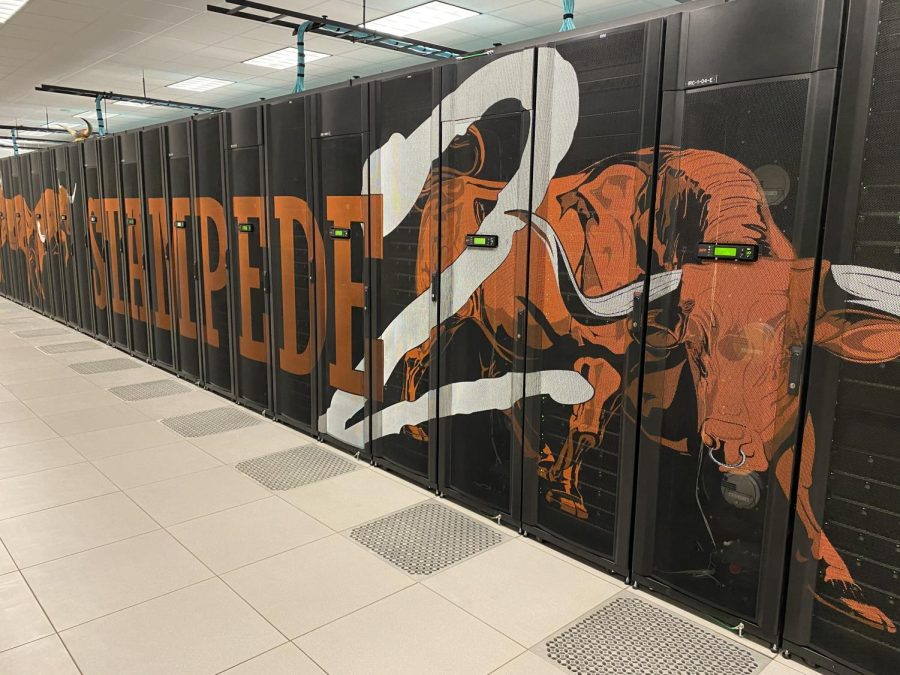UT receives extended funding for supercomputer, continues assisting scientists in research
March 10, 2022
Stampede2, one of the supercomputers available to University researchers, received a funding extension Feb. 21 to continue supporting scientists with research. The funding will last until June 2023, but could be extended if the National Science Foundation chooses.
The Stampede2 supercomputer, an advancement of its predecessor Stampede1, began operation in November 2017 and received approximately $30 million in its initial release, according to the NSF’s website. Tommy Minyard, a director for the Texas Advanced Computing Center, said since Stampede2’s deployment, the supercomputer has run over nine million jobs on its system.
“I think (we’ve run) over nine million jobs on the system so far and supported a wide breadth of scientific activities,” Minyard said. “You name it, somebody probably runs it on the system. It’s got thousands of projects it’s supported over its life and hundreds of active users every day on the system.”
The supercomputer helped researchers obtain the first image of a black hole in April 2019 and examine specific mutations in cancer cells in September 2020.
“In a lot of cases, researchers need a lot of computational time, and they need to run hundreds or thousands of different simulations to perform their modeling and validate the different algorithms or scientific approaches they’re doing,” Minyard said. “Without a system like Stempede2, it takes them years … to be able to get those computations done.”
Manish Parashar, office director of advanced cyberinfrastructure at the NSF, said the organization wanted to continue funding Stampede2 because of its impact on the scientific community.
“Increasingly, we want to make sure that we democratize access to all our resources, and that means every researcher has the ability … to lower the barriers to access these resources,” Parashar said. “During its extended lifetime, Stampede2 will provide a basis to build those mechanisms that we can then use across our broader ecosystem.”
Stampede2 remains the most widely used of the NSF’s Extreme Science and Engineering Discovery Environment, which works as a system for scientists to share resources and data, according to Minyard.
“In the 21st century, computing plays such an important role for scientific discovery (and) for innovation,” Parashar said. “Stampede, along with our broader computational ecosystem, provides these critical resources that … can be leveraged by scientists to make those discoveries to get those innovations.”
Minyard said he hopes Stampede2 can push the boundaries of research and continue to support researchers.
“It’s interesting for us when we’re supporting folks that are working towards breakthrough science research,” Minyard said. “We like supporting … stuff that really pushes the boundaries. That’s why we try to build bigger and faster systems (to) support the scientists (running) something that they may have never even considered or (solving) a problem that they thought was not capable of being done.”



